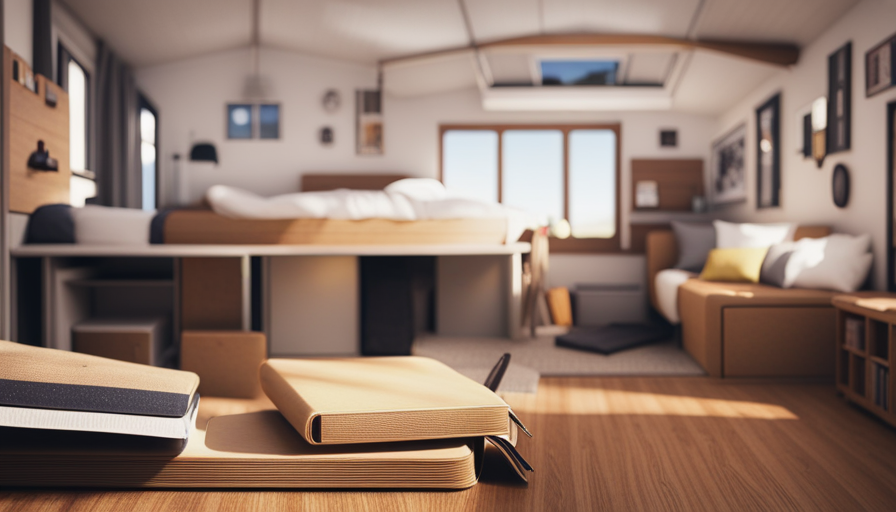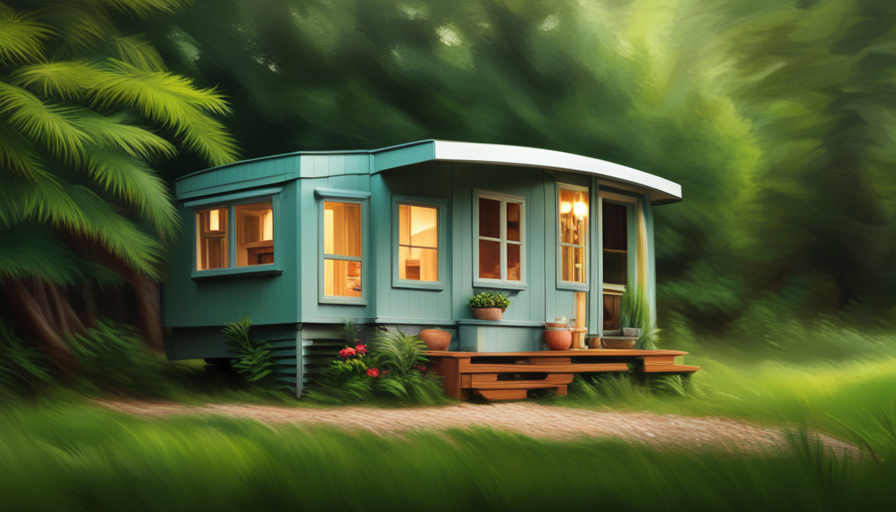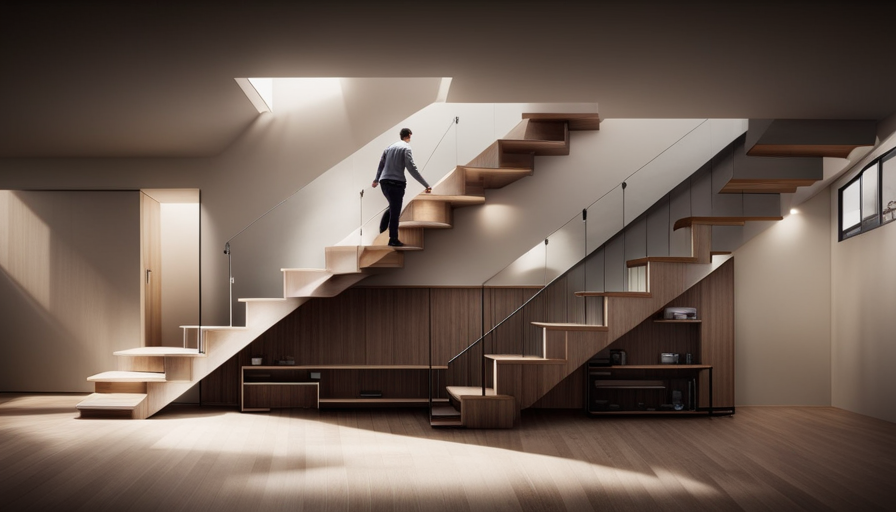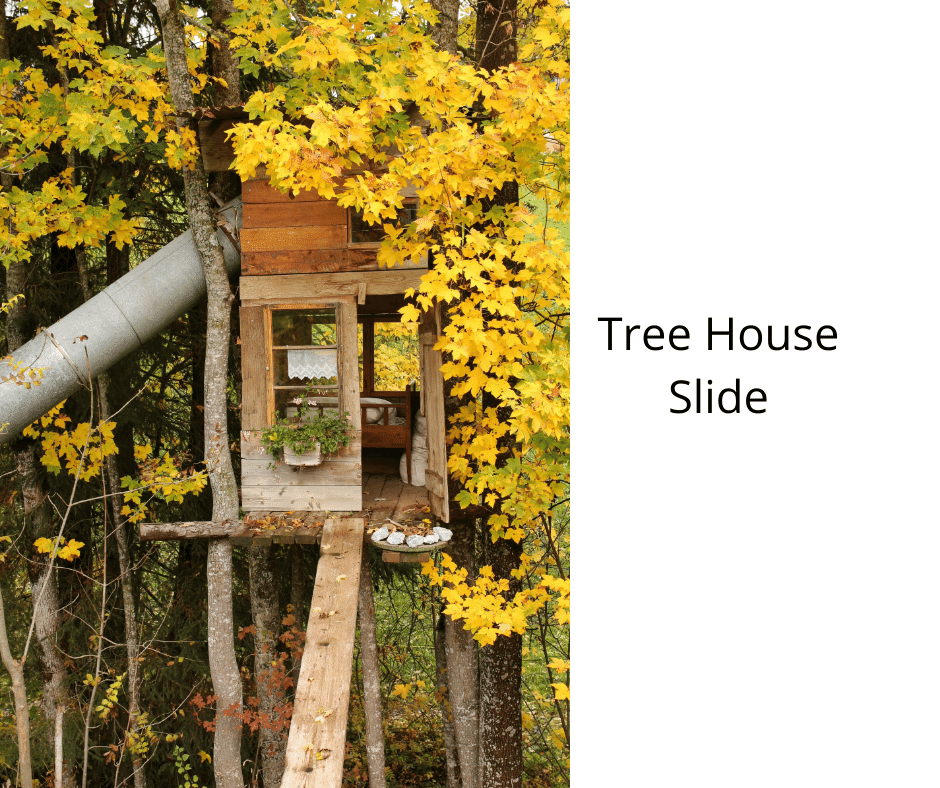Have you ever thought about the attraction of tiny houses?
Picture this: a cozy, inviting space that is ingeniously designed to maximize every square inch. It’s a home that embraces the idea of living simply, with a minimal footprint and a focus on functionality. This is the world of tiny houses, where less is truly more.
In this article, we will explore the question that many people have asked: how big is the normal tiny house? From the various sizes available to the factors influencing their dimensions, we will delve into the world of tiny homes and uncover the secrets behind their design and construction.
We will also discuss the benefits of living in a tiny house, the creative use of space within these homes, and the customization options available to make your tiny house uniquely yours.
So, if you’re curious about the tiny house movement and want to learn more about the future trends in tiny house living, join me as we embark on this journey into the world of compact and efficient living spaces.
Key Takeaways
- Tiny houses range in size from around 100 to 400 square feet, with exceptions.
- Downsizing to a tiny house allows for a simpler and more minimalist lifestyle.
- Factors influencing tiny house size include cost considerations, spatial efficiency, number of occupants, lifestyle requirements, and zoning regulations.
- Space-saving techniques in tiny houses include using multi-purpose furniture, maximizing vertical space, incorporating built-in storage, and using foldable and collapsible items.
Different Sizes of Tiny Houses
When it comes to the different sizes of tiny houses, you’ll find that there’s a wide range to choose from. Tiny houses typically range from around 100 to 400 square feet, but there are exceptions on both ends of the spectrum.
The size of a tiny house is influenced by various factors. One of the main factors affecting affordability is the size of the house. Generally, the smaller the house, the lower the cost of construction and maintenance. This makes tiny houses an attractive option for those looking to downsize and reduce expenses.
Additionally, downsizing to a tiny house comes with a multitude of benefits. Firstly, it allows for a simpler and more minimalist lifestyle. With less space to fill, you’re encouraged to prioritize your belongings and keep only what truly matters to you. This can lead to a sense of freedom and less stress. Secondly, tiny houses are environmentally friendly, as they require less energy to heat and cool. They also have a smaller environmental footprint compared to traditional houses.
Factors influencing tiny house size include personal preferences, intended use, and zoning regulations. Personal preferences can vary greatly, with some individuals preferring a more compact living space and others desiring a slightly larger area. The intended use of the tiny house, whether it’s for full-time living or as a vacation home, can also impact the size. Lastly, zoning regulations in different areas may impose restrictions on the minimum or maximum size of a tiny house.
Moving on to the next section about factors influencing tiny house size…
Factors Influencing Tiny House Size
One key factor that influences the size of a compact dwelling is the number of occupants it can comfortably accommodate. When determining the size of a tiny house, it’s essential to consider factors such as cost, spatial efficiency techniques, and the needs of the individuals who will be living in the space. By carefully considering these factors, you can create a tiny house that maximizes both comfort and functionality.
To better understand the factors influencing tiny house size, let’s take a look at a comparison table:
| Factor | Description |
|---|---|
| Cost considerations | Budget constraints play a significant role in determining the size of a tiny house. Affordable materials and simplified designs can help keep costs down. |
| Spatial efficiency | Clever design techniques, such as incorporating multi-purpose furniture and utilizing vertical space, can help maximize the available square footage. |
| Number of occupants | The more people living in the tiny house, the more space is needed for sleeping, dining, and living areas. |
| Lifestyle requirements | Consider the activities and hobbies of the occupants, as specific needs may require additional space. |
| Zoning and legal limits | Local regulations may impose restrictions on the size of tiny houses, so it’s important to research and comply with any legal requirements. |
Taking all these factors into account, we can determine the ideal size for a tiny house that suits the needs and preferences of its occupants. In the next section, we will explore the common dimensions of tiny houses.
Common Dimensions of Tiny Houses
Discover the enchanting world of compact dwellings and immerse yourself in the captivating dimensions of these charming abodes.
Tiny houses come in various styles and sizes, each offering a unique living experience. While there is no standard size for a tiny house, they are typically designed to be around 400 to 600 square feet. However, it’s essential to note that some tiny houses can be as small as 100 square feet or as large as 1,000 square feet, depending on individual preferences and local regulations.
When it comes to construction materials, tiny houses can be built using a wide range of options. From traditional wood framing to eco-friendly materials like recycled shipping containers or reclaimed materials, the choices are endless. Each material has its advantages and considerations, allowing homeowners to customize their tiny houses according to their needs and preferences.
Key considerations for tiny house design include efficient space utilization, multi-purpose furniture, and creative storage solutions. These factors contribute to maximizing the available space and creating a comfortable living environment. By carefully considering these design elements, tiny house owners can create a functional and stylish home that suits their lifestyle.
Transitioning into the subsequent section about design considerations for tiny houses, it’s important to consider various factors that go beyond just size and construction materials.
Design Considerations for Tiny Houses
When it comes to designing a tiny house, there are two key considerations that must be taken into account: space-saving techniques and multi-functional furniture. These aspects are crucial in maximizing the limited space available in a tiny house and ensuring that it’s both practical and comfortable to live in.
By utilizing clever design solutions and incorporating furniture that serves multiple purposes, it’s possible to create a tiny house that feels spacious and meets all of your needs.
Space-Saving Techniques
Imagine living in a normal tiny house, where every inch of space is cleverly utilized to create a cozy and efficient living environment. To achieve this, space-saving techniques are crucial. Here are some ways to maximize the limited space in a tiny house:
-
Multi-purpose furniture: Opt for furniture pieces that serve multiple functions, such as a sofa that can be converted into a bed or a dining table that can double as a workspace.
-
Maximizing vertical space: Utilize the vertical height of the house by installing shelves, cabinets, and storage systems that go all the way up to the ceiling. This helps to keep the floor area clutter-free.
-
Built-in storage solutions: Incorporate built-in storage wherever possible, such as under the stairs or inside the walls. This eliminates the need for extra furniture and keeps the space organized.
-
Foldable and collapsible items: Invest in foldable chairs, collapsible tables, and retractable walls that can be easily tucked away when not in use, creating more open space.
By incorporating these space-saving techniques, tiny house dwellers can make the most of their limited square footage.
In the next section, we’ll explore the concept of multi-functional furniture and its role in maximizing space.
Multi-functional Furniture
To truly optimize your living space, consider incorporating multi-functional furniture that seamlessly transforms to meet your needs, just like a chameleon blending into its environment.
Multi-functional furniture is designed with space optimization in mind, allowing you to make the most of every square inch in your tiny house.
From sofa beds that convert into dining tables to ottomans with hidden storage compartments, these pieces serve multiple purposes without sacrificing style or functionality.
By investing in multi-functional furniture, you can maximize your living area and create a versatile space that adapts to your changing lifestyle. This not only enhances your day-to-day living experience but also allows you to entertain guests comfortably.
As we delve into the benefits of living in a tiny house, you’ll discover how multi-functional furniture plays a vital role in making your small space feel spacious and inviting.
Benefits of Living in a Tiny House
Living in a tiny house offers numerous benefits, including a lower cost of living and environmental sustainability. By choosing to live in a smaller space, I can significantly reduce my expenses on housing, utilities, and maintenance.
Additionally, tiny houses are often designed with eco-friendly materials and energy-efficient systems, allowing me to minimize my carbon footprint and contribute to a more sustainable lifestyle.
Overall, embracing the tiny house movement not only offers financial advantages but also aligns with my commitment to living responsibly and in harmony with the environment.
Lower Cost of Living
One of the key advantages of tiny houses is their ability to significantly reduce the cost of daily expenses. With a smaller living space, there is less square footage to heat, cool, and maintain, resulting in lower utility bills.
Additionally, the reduced size of a tiny house often means a lower mortgage or rent payment, as well as lower property taxes. This lower cost of living can free up financial resources for other priorities, such as saving for retirement, paying off debt, or pursuing hobbies and experiences.
Furthermore, the minimalistic lifestyle that comes with living in a tiny house encourages conscious consumption and helps to curb unnecessary spending. Transitioning into the next section about environmental sustainability, the financial benefits of tiny house living also align with the values of preserving our planet for future generations.
Environmental Sustainability
Lowering the cost of living in a tiny house is just one of the many benefits. Now, let’s talk about another important aspect of tiny house living: environmental sustainability.
Tiny houses are known for their green building techniques and commitment to sustainable living. These homes are designed with eco-friendly materials and energy-efficient features, allowing for minimal environmental impact. From solar panels to rainwater harvesting systems, tiny houses are at the forefront of environmentally-conscious living.
By reducing the use of resources and minimizing waste, tiny house owners are able to live a more sustainable lifestyle. Incorporating green practices into daily life is not only good for the environment but also for the overall well-being of the homeowner.
Transitioning to the next section, let’s explore the challenges of living in a tiny house.
Challenges of Living in a Tiny House
Living in a tiny house presents several challenges that one must consider. One of the main challenges is the limited storage space available. With such a small living area, finding creative solutions to store belongings becomes crucial.
Additionally, privacy and personal space can be compromised in a tiny house, as there are limited areas to retreat to for alone time. These challenges require careful planning and organization to ensure a comfortable living experience in a tiny house.
Limited Storage Space
With limited storage space, fitting all your belongings into a tiny house can be as challenging as trying to fit a square peg in a round hole. However, there are space-saving hacks and organization solutions that can help maximize the available storage in a tiny house.
Utilizing vertical space is essential, with the use of wall-mounted shelves, hanging organizers, and lofted beds with built-in storage compartments. Additionally, multipurpose furniture such as ottomans with hidden storage or foldable tables can provide extra space when needed.
Efficiently organizing belongings and minimizing clutter through decluttering and regular purging is also crucial. By implementing these strategies, it’s possible to make the most of the limited storage space in a tiny house and create a functional living environment.
Transitioning into the subsequent section about privacy and personal space, it’s important to address another aspect of tiny house living.
Privacy and Personal Space
To truly create a sense of sanctuary within your compact abode, imagine yourself nestled in a cozy nook where you can escape the hustle and bustle of the outside world. Privacy concerns are a common challenge in tiny houses, given the limited space available. However, with careful planning and smart design choices, you can maximize privacy and personal space. One effective way to address this is by incorporating room dividers or curtains that can be drawn when needed. Additionally, utilizing vertical space can help create distinct areas for different activities, ensuring privacy and separation. To give you a visual representation, here is a table showcasing different privacy solutions commonly used in tiny houses:
| Privacy Solution | Description | Benefits |
| —————–|————–|————|
| Room dividers | Portable partitions that can be moved as needed | Flexibility in creating private spaces |
| Curtains | Hanging fabric panels that can be drawn for privacy | Easy to install and cost-effective |
| Loft bedrooms | Sleeping areas elevated above the main living space | Separation and privacy from the rest of the house |
To make the most of your tiny house, it’s essential to creatively utilize the available space. Now let’s explore the next section about the creative use of space in tiny houses.
Creative Use of Space in Tiny Houses
One of the key secrets to maximizing space in tiny houses is thinking outside the box. When it comes to space optimization, every square inch counts. Here are three creative ways to make the most of your tiny house:
-
Multi-functional furniture: Investing in furniture that serves multiple purposes is a game-changer. For example, a sofa that can be transformed into a bed or a coffee table with hidden storage compartments. These innovative pieces help maximize both living and storage space.
-
Vertical storage solutions: Utilizing vertical space is essential in tiny houses. Installing shelves or cabinets that go all the way up to the ceiling provides ample storage without taking up valuable floor space. Additionally, using wall hooks or hanging organizers can help keep things organized and off the ground.
-
Customized built-ins: Customized built-in furniture and storage solutions are tailored to fit the specific dimensions of your tiny house. From built-in bookshelves to pull-out pantry cabinets, these custom options make the most of every nook and cranny.
With these space-saving techniques, you can optimize the limited square footage of your tiny house. Now, let’s explore the various customization options available for tiny houses.
Customization Options for Tiny Houses
When it comes to customization options for tiny houses, there are two key points to consider: unique floor plans and exterior design choices.
As someone who’s knowledgeable about tiny houses, I can tell you that one of the most exciting aspects of customizing a tiny house is the ability to create a floor plan that perfectly suits your needs and lifestyle.
Additionally, the exterior design choices for tiny houses are endless, allowing you to personalize your home and make it truly unique.
Unique Floor Plans
Imagine walking into a tiny house and being greeted by a unique floor plan that feels spacious and inviting. The beauty of tiny houses lies in their ability to maximize every inch of space, and unique floor plans are a key aspect of this design philosophy.
These floor plans are carefully crafted to optimize space utilization, ensuring that every nook and cranny has a purpose. Here are two sub-lists that illustrate the ingenuity behind these floor plans:
-
Multi-functional furniture: Tiny houses often feature furniture pieces that serve multiple purposes, such as a sofa that transforms into a bed or a dining table that doubles as a workspace.
-
Creative storage solutions: From built-in shelves and cabinets to hidden compartments under stairs, every inch of the tiny house is utilized for storage, allowing for a clutter-free living experience.
With these unique design features, tiny houses offer a refreshing take on interior design. As we move on to discuss exterior design choices, the creativity and attention to detail continue to shine.
Exterior Design Choices
Step outside and take in the exterior design choices of your dream home, where every detail has been carefully considered to create a visually stunning and welcoming facade.
When it comes to exterior design trends for tiny houses, simplicity and functionality are key. Clean lines, neutral colors, and minimalist aesthetics are popular choices, allowing the tiny house to blend seamlessly with its surroundings. Incorporating natural materials, such as wood or stone, can further enhance the overall appeal.
Additionally, landscaping ideas play a crucial role in enhancing the exterior. Thoughtful placement of plants, trees, and pathways can create a sense of harmony and beauty.
As you admire the exterior design choices of your tiny house, it’s important to consider the legal aspects. From zoning regulations to building codes, understanding the legal considerations will ensure a smooth and hassle-free journey towards your dream tiny home.
Legal Considerations for Tiny Houses
When it comes to legal considerations for tiny houses, two key points to keep in mind are zoning regulations and building codes.
Zoning regulations dictate where you can legally park or build a tiny house, while building codes ensure that the structure meets certain safety and structural standards.
It’s important to familiarize yourself with these regulations and codes to ensure compliance and avoid any potential legal issues.
Zoning Regulations
The strict zoning regulations can make it nearly impossible to build a tiny house in many areas. Zoning restrictions and local ordinances set specific requirements for the size and location of dwellings, often making it difficult for tiny houses to fit within the designated parameters.
Many areas have minimum square footage requirements for homes, which tiny houses typically don’t meet. Additionally, some zoning regulations require homes to be connected to utilities, which can be challenging for tiny houses that are often designed to be off-grid or have alternative energy sources.
These strict regulations can be frustrating for those interested in the tiny house movement, as they limit the ability to live in a smaller, more sustainable dwelling. However, despite these challenges, there are still ways to navigate the zoning regulations and build a tiny house that complies with local ordinances.
Transitioning into the next section about building codes, it’s important to understand the specific regulations that apply to tiny houses in order to ensure compliance throughout the construction process.
Building Codes
Don’t overlook the importance of understanding and complying with building codes when constructing your small dwelling. Building codes are regulations put in place to ensure the safety and structural integrity of a building.
When it comes to tiny houses, it’s crucial to pay attention to these codes as they dictate the minimum requirements for building materials and safety regulations. The choice of building materials is particularly important, as they need to be durable and able to withstand the stressors that come with living in a small space.
Additionally, safety regulations cover everything from electrical systems to fire safety measures. By adhering to building codes, you can ensure that your tiny house is not only safe but also meets the standards required for legal occupancy.
Looking ahead, it’s interesting to consider future trends in tiny house living and how they may influence building codes and regulations.
Future Trends in Tiny House Living
One exciting aspect of future trends in tiny house living is just how big these homes can be. As the movement continues to gain popularity, more and more innovative designs are being developed to maximize space and functionality in tiny homes.
One trend that is emerging is the concept of expandable tiny houses. These homes are designed to be compact for easy transportation, but they can expand or transform to provide additional living space when needed. This allows homeowners to have the best of both worlds – a small and efficient living space for everyday use, and a larger space for entertaining or accommodating guests.
Another trend in tiny house living is the incorporation of smart home technology. With advancements in technology, homeowners are able to control various aspects of their homes, such as lighting, temperature, and security, all from their smartphones or other devices. This not only adds convenience, but also enhances the overall living experience in a tiny home.
In addition to size and technology, future trends in tiny house living also focus on sustainability and eco-friendly features. Many tiny homes are being built using renewable materials and energy-efficient systems, such as solar panels and composting toilets. These features not only reduce the environmental impact of the homes, but also help homeowners save money on utilities.
Overall, future trends in tiny house living are pushing the boundaries of what is possible in terms of size, design, and functionality. With innovative designs, smart home technology, and a focus on sustainability, tiny homes are becoming more than just a trend – they’re a viable and exciting option for those looking to downsize and live a simpler, more efficient lifestyle.
Frequently Asked Questions
Are tiny houses legally considered as permanent dwellings or are they classified as recreational vehicles?
Tiny houses can have different legal statuses depending on local regulations. In some areas, they may be considered as permanent dwellings, while in others, they may be classified as recreational vehicles. This classification affects various aspects, including zoning laws, building codes, and financing options.
It’s important to research and understand the specific legal status of tiny houses in your area before embarking on building one. Financing options for building tiny houses can vary, ranging from personal savings to loans specifically designed for tiny house construction.
How much does it cost to build a tiny house, including the cost of land and utilities?
The cost of building a tiny house, including the cost of land and utilities, can vary greatly depending on various factors such as location, size, materials, and amenities.
A cost breakdown typically consists of expenses for land acquisition, construction materials, labor, permits, and utility connections.
Pros of building a tiny house include lower upfront costs, reduced energy consumption, and a simpler lifestyle. However, potential cons include limited space and challenges with zoning regulations and financing options.
What are the health and safety regulations for tiny houses, particularly in terms of plumbing and electrical systems?
Plumbing requirements and electrical safety are crucial aspects of building a tiny house. When it comes to plumbing, it’s important to meet local regulations for wastewater disposal. This includes using a proper septic system or connecting to a municipal sewer line.
Electrical systems should be installed by a licensed electrician, following all applicable codes and safety standards. This ensures proper grounding, circuit protection, and fire prevention.
Adequate insulation and ventilation also contribute to overall health and safety in a tiny house.
Can tiny houses be easily relocated or are they typically fixed in one location?
Tiny houses can be easily relocated due to their compact size and mobility options. However, there are certain challenges associated with their relocation. Factors such as permits, transportation logistics, and site preparation need to be considered.
Additionally, the weight and dimensions of the tiny house may affect the ease of relocation. It’s crucial to consult local regulations and hire professionals to ensure a smooth and safe relocation process.
Are there any special zoning regulations or restrictions that apply to tiny houses, such as minimum lot sizes or setbacks?
Zoning regulations for tiny houses vary depending on the location. Some areas have minimum lot size requirements or setback restrictions that may affect the placement of a tiny house.
It’s important to research and understand the local zoning laws before deciding to build or park a tiny house.
In terms of financing options, there are specialized lenders who offer loans specifically for tiny houses, and alternative financing methods like crowdfunding or personal savings can also be explored.
Conclusion
In conclusion, the charm of tiny houses lies in their compactness and customization. From cozy cabins to sleek modern designs, the size of a tiny house can vary based on personal preferences and practical considerations.
However, regardless of their dimensions, these small dwellings offer a plethora of benefits, including reduced environmental impact, lower costs, and a simpler lifestyle.
By maximizing space and incorporating clever design elements, tiny houses prove that living small doesn’t mean sacrificing comfort or style. So, seize the opportunity to downsize and discover the delightful world of tiny house living!
Hi, I’m Emma. I’m the Editor in Chief of Tiny House 43, a blog all about tiny houses. While tree houses are often associated with childhood, they can be the perfect adult retreat. They offer a cozy space to relax and unwind, surrounded by nature. And since they’re typically built on stilts or raised platforms, they offer stunning views that traditional homes simply can’t match. If you’re looking for a unique and romantic getaway, a tree house tiny house might just be the perfect option.










